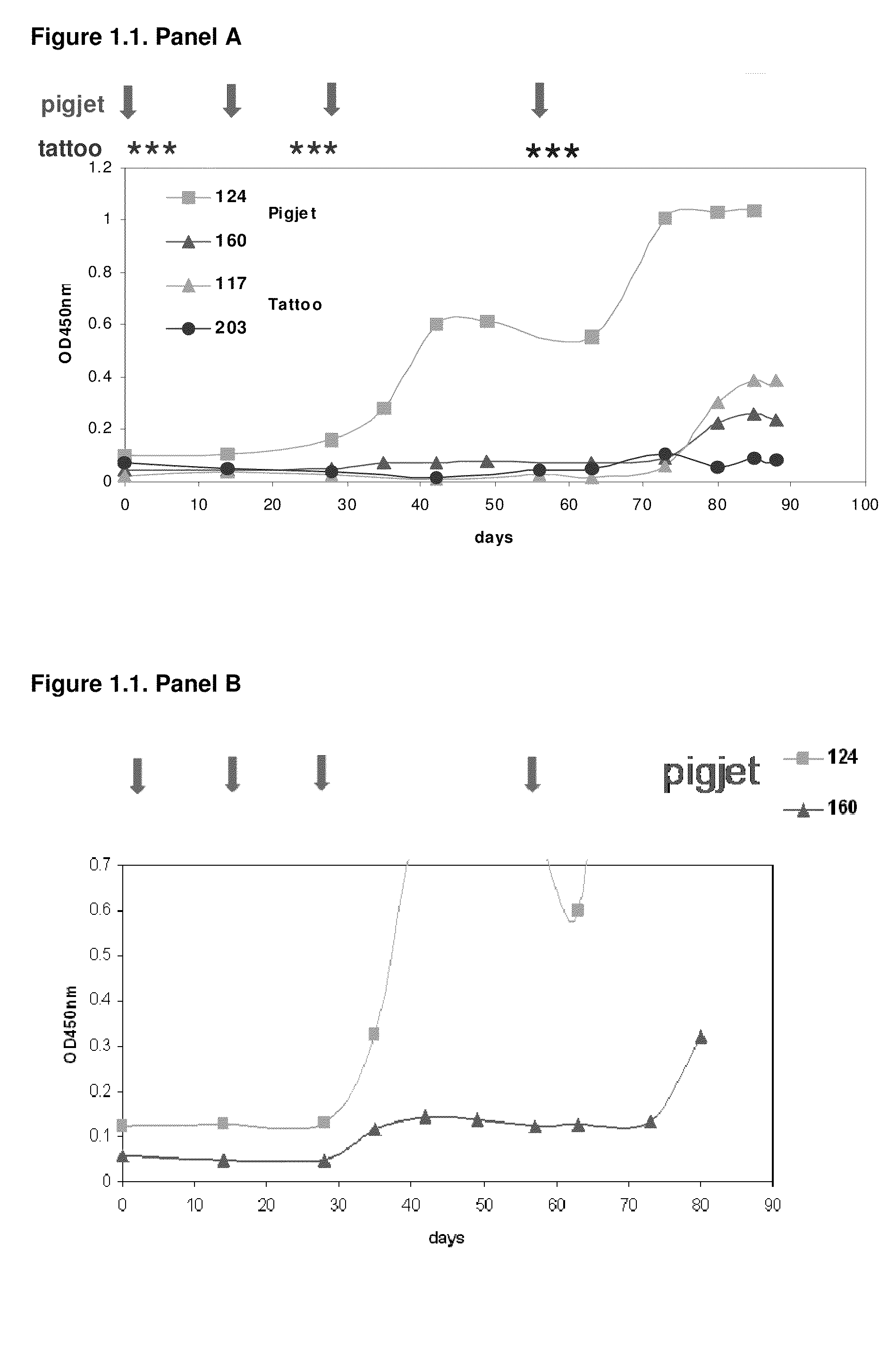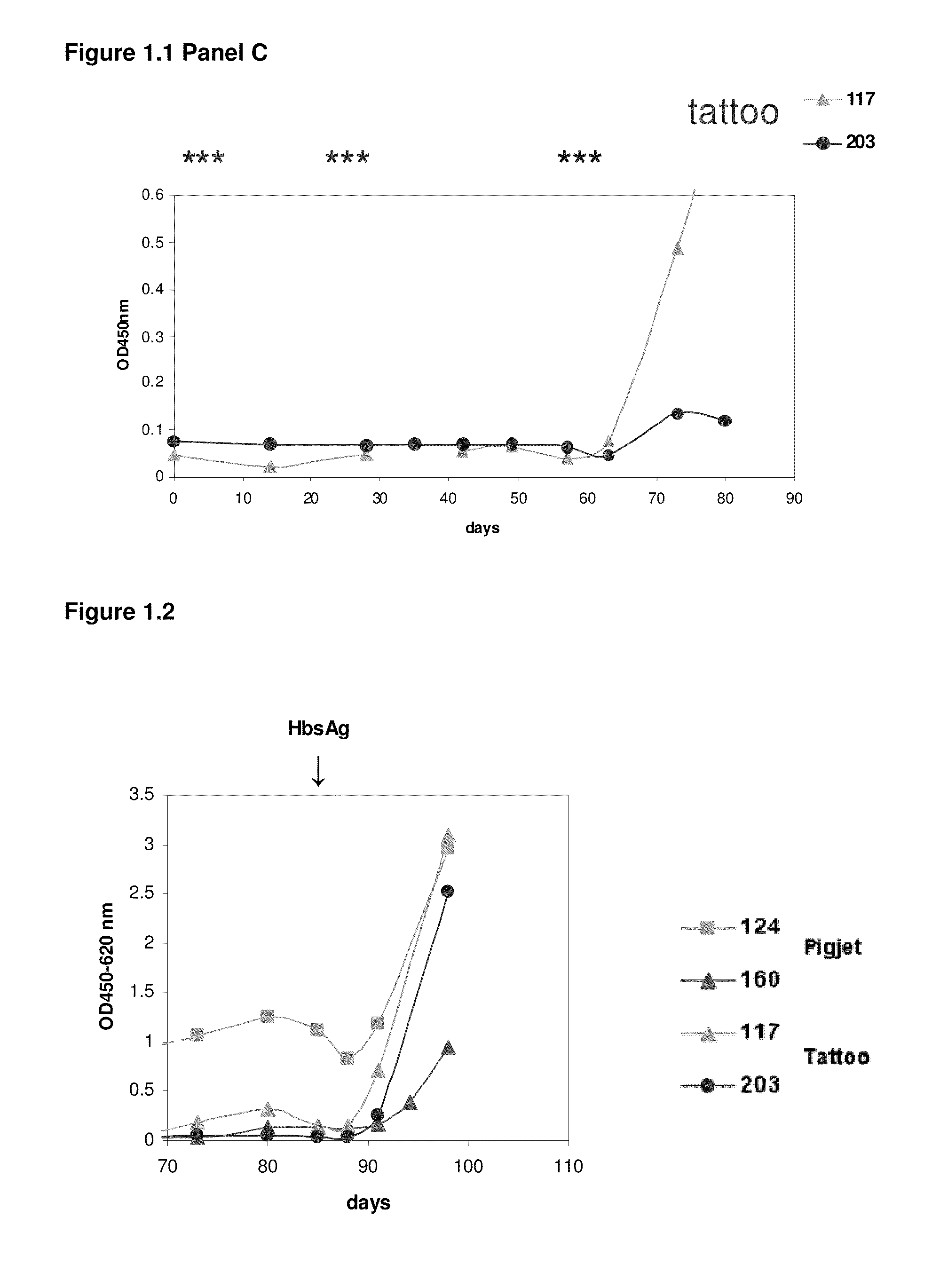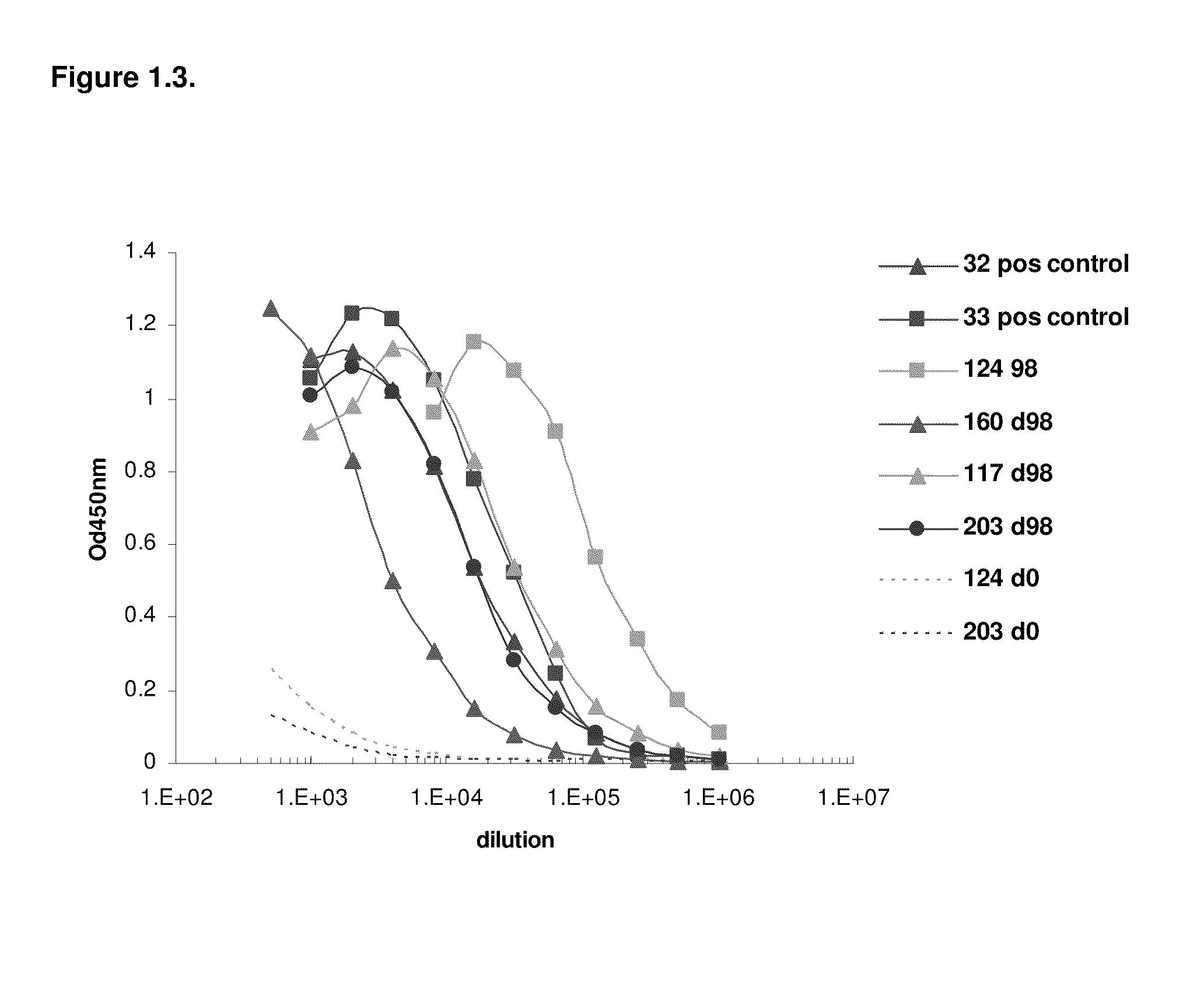Method for generation of immunoglobulin sequences
a technology of immunoglobulin and sequence, which is applied in the field of generating immunoglobulin sequences against cellassociated antigens, can solve the problems that cell-associated, and especially membrane-bound antigens, are difficult to obtain in their natural conformation, and achieve good specificity and acceptable breadth
- Summary
- Abstract
- Description
- Claims
- Application Information
AI Technical Summary
Benefits of technology
Problems solved by technology
Method used
Image
Examples
example 1
Genetic Immunization of Llamas and Identification of Immunoglobulin Sequences Using the Hepatitis B Small Surface Antigen as a Model Antigen
[1290]Target specific camelid immunoglobulin sequences were identified following DNA vaccination. Hepatitis B small surface antigen was chosen as a model antigen, as this protein has been widely used to induce humoral immune responses in animals following genetic immunization.
example 1.1
Generation and Preparation of Plasmid for Genetic Immunization
[1291]Eukaryotic expression vector pRc / CMV-Hbs(s) encoding the Hepatitis B small surface antigen (HBSAg) is obtained from Aldevron. Expression is under control of the constitutive Cytomegalovirus (CMV) promoter. The sequence of the resulting construct as been verified by sequence analysis.
[1292]Plasmid DNA is produced using Endotoxin-free Gigaprep kit (Qiagen) according to the manufacturer's instructions. The vector DNA is finally reconstituted at a concentration of 1 mg / mL in endotoxin-free LAL H2O or in endotoxin-free 0.9% NaCl in LAL H2O. Plasmid is stored in aliquots at −20° C. Prior to use the plasmid DNA solution is centrifuged to remove possible aggregates.
example 1.2
Induction of a humoral immune response in camelids via genetic immunization following distinct methods of DNA administration.
[1293]After approval of the Ethical Committee of the Faculty of Veterinary Medicine (University Ghent, Belgium), four llamas (124, 160, 117 and 203) were immunized using two genetic immunization methods to induce an antigen specific humoral response. For both methods, DNA was applied intradermally (ID). The first DNA administration method consisted of needle-free jet injection, the second followed a tattoo method (Bins et al. 2005. Nature Medicine 11:899-904). Prior to the application of the DNA, an area of the llama skin of approximately 200-240 cm2 is shaved above the shoulder-blade, the skin is treated with commercial depilation cream (Veet) for 2 minutes to chemically remove all remaining hair and part of the stratum corneum, and the shaved area is thoroughly cleaned by rinsing with water. For the first method, DNA is administrated into the skin using the ...
PUM
| Property | Measurement | Unit |
|---|---|---|
| affinity | aaaaa | aaaaa |
| nucleic acid | aaaaa | aaaaa |
Abstract
Description
Claims
Application Information
 Login to View More
Login to View More - R&D
- Intellectual Property
- Life Sciences
- Materials
- Tech Scout
- Unparalleled Data Quality
- Higher Quality Content
- 60% Fewer Hallucinations
Browse by: Latest US Patents, China's latest patents, Technical Efficacy Thesaurus, Application Domain, Technology Topic, Popular Technical Reports.
© 2025 PatSnap. All rights reserved.Legal|Privacy policy|Modern Slavery Act Transparency Statement|Sitemap|About US| Contact US: help@patsnap.com



